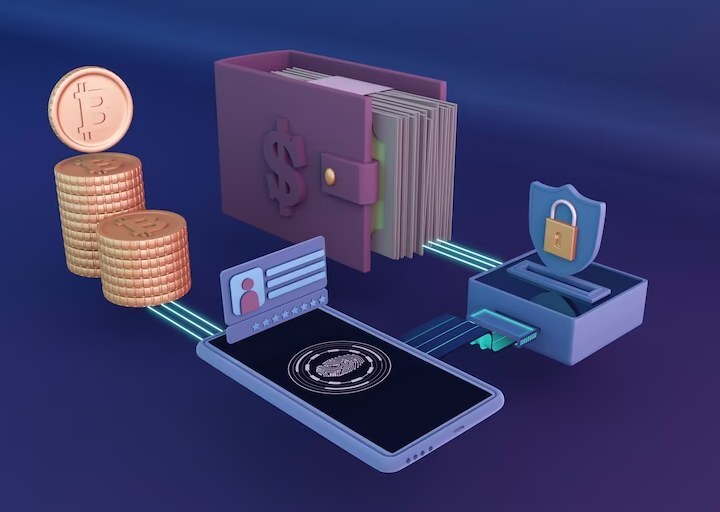In our hyper-connected world, data breaches and cyber-attacks are all too common, making secure transactions a necessity. The weaknesses of traditional centralized systems can be a playground for cybercriminals. But there’s a new kid on the block(chain) promising a safer transactional future. Let’s delve into how blockchain development is transforming this space and revolutionizing multiple sectors.
Table of Contents:
1. ABCs of Blockchain
2. Blockchain – How’s it Work?
3. Why Blockchain for Secure Transactions?
3.1 Permanency and Transparency
3.2 Top-notch Security and Privacy
3.3 Goodbye Intermediaries
3.4 Efficiency and Affordability
4. Where Blockchain’s Making a Mark in Secure Transactions
4.1 Finance and Banking
4.2 Supply Chain Management
4.3 Healthcare and Pharmaceuticals
4.4 Property and Real Estate
5. Roadblocks in Blockchain
1- ABCs of Blockchain
Think of blockchain as a decentralized ledger distributed across multiple computers or nodes. Each transaction forms a block that’s linked to its predecessor, creating a chain of blocks. It’s a clear, permanent, and tamper-proof way of recording transactions. With such secure transactions, financial institutions, businesses, and individuals can breathe easy about protecting their assets and sensitive information.
2- Blockchain – How’s it Work?
Blockchain uses state-of-the-art cryptographic methods and consensus algorithms to safeguard transactional integrity and security. When a new transaction appears, it’s broadcasted to a network of nodes for validation. Once consensus is reached, the transaction is added to a block. This block is then linked to the existing chain, creating an auditable record of transactions.

3- Why Blockchain for Secure Transactions?
3.1 Permanency and Transparency
A key advantage of blockchain is its permanency. Once a transaction is added to the blockchain, changing or erasing it becomes virtually impossible, securing the authenticity of transactions. Moreover, blockchain’s transparency allows real-time tracking and verification of transactions, boosting trust, and reducing fraud.
3.2 Top-notch Security and Privacy
Blockchain uses advanced cryptographic techniques for transactional security. Each transaction is digitally signed and encrypted, making data tampering by unauthorized individuals extremely challenging. Plus, users can keep personal info under wraps, removing the need for third parties that might mishandle sensitive data.
3.3 Goodbye Intermediaries
Blockchain eliminates intermediaries like banks or payment processors from transactions. This not only cuts costs and fraud risks but also speeds up transaction times. Blockchain-powered peer-to-peer transactions offer people and businesses more control over their financial affairs.
3.4 Efficiency and Affordability
Blockchain transactions are more efficient and affordable than traditional ones. Its decentralized nature removes tedious manual processes and paperwork, streamlining transactions and cutting overhead costs. That’s why many industries see blockchain as an appealing secure transaction option.
4- Where Blockchain’s Making a Mark in Secure Transactions
Blockchain’s already transforming secure transactions in various sectors:
4.1 Finance and Banking
Blockchain supports quicker, safer, and cheaper cross-border transactions, removes intermediaries, and cuts transaction fees. It also supports smart contracts, which are self-executing contracts with set rules encoded within the blockchain. These smart contracts streamline and secure agreements.
4.2 Supply Chain Management
By adopting blockchain, supply chains can become more transparent and traceable. Each step in the supply chain can be recorded on the blockchain, ensuring product authenticity and origin, boosting trust, and cutting the risk of fakes.
4.3 Healthcare and Pharmaceuticals
Blockchain can enhance patient data security, allowing secure medical record sharing among healthcare providers. It also safeguards against counterfeit drugs entering the supply chain, ensuring medication safety and authenticity.
4.4 Property and Real Estate
Blockchain simplifies and secures real estate transactions by digitizing property records and removing intermediaries. It provides a tamper-proof and transparent ownership record, making property title transfers simple and fraud-free.
5- Roadblocks in Blockchain
Despite its potential, blockchain face challenges that need tackling.
5.1 Scalability Issues
Blockchain networks struggle with scalability, especially concerning transaction processing speed and capacity. As transactions pile up, the network can slow down. Thankfully, ongoing R&D efforts are working on scalability solutions like sharding and layer-two solutions.
5.2 Legal and Regulatory Issues
Laws and regulations regarding blockchain use are still evolving, and inconsistency across jurisdictions can create challenges. But as understanding of blockchain grows, we can expect more consistent and supportive regulatory frameworks.
In a nutshell, blockchain’s potential to transform secure transactions is immense. As we navigate these digital waters, we’ll no doubt see exciting developments on the blockchain horizon. So, buckle up and get ready for a safer and more transparent transactional future!
One Reply to “How Blockchain Development is the Future of Secure Transactions”
Comments are closed.